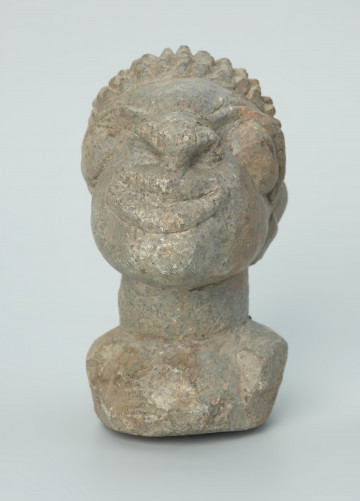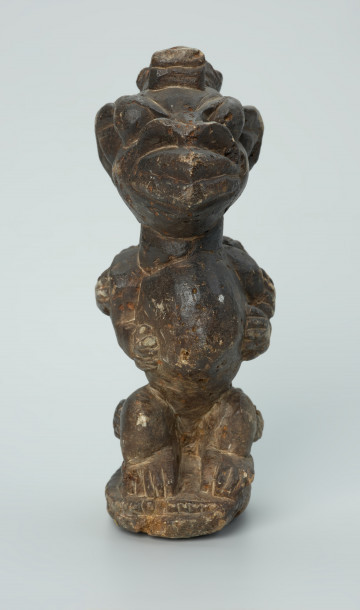
Figure of worship of forces of vegetation
1901 — 1971
National Museum in Szczecin
Part of the collection: Stone figurines from West Africa
The stone cult figure of the forces of vegetation, called nomoli (plural nomolisia) in the Mende language, was carved in soapstone, a soft microcrystalline rock. Dating the nomolisia carvings is difficult, but there is speculation that they were created before the first Portuguese arrived in the coastal areas of Sierra Leone in the 15th-16th centuries. It is also problematic to determine the ethnic group whose representatives made them and the purpose of their creation. It is believed that they originally depicted chiefs or leaders of the group. The Mende people found nomolisia figures in the ground during agricultural work. The Mende believe that the excavated statues are the abodes of guardian spirits who are supposed to ensure a good harvest, so they are placed in the rice fields and gifts are offered to them after a bountiful harvest.The nomoli figure in question represents a man with a characteristic headdress. It is probably a ruler's crown called anio, a piece of cloth wrapped around the head in the form of a separate band, the ends of which fall to the shoulders and back. Anio headbands are worn to this day by the prominent chiefs of the Temne ethnic group of Sierra Leone.
Katarzyna Findlik-Gawron
Author / creator
Dimensions
cały obiekt: height: 23,6 cm, width: 9,4 cm
Object type
figure
Creation time / dating
Creation / finding place
Identification number
Location / status

1901 — 1971
National Museum in Szczecin

około 1970 — 1979
National Museum in Szczecin

1901 — 1971
National Museum in Szczecin
DISCOVER this TOPIC
Castle Museum in Łańcut
DISCOVER this PATH
Educational path